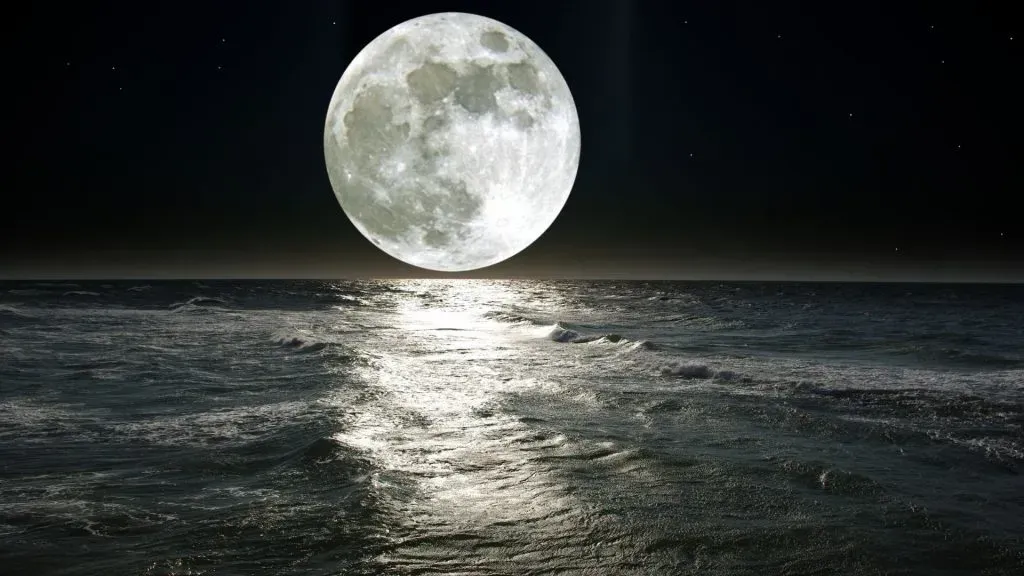Dreaming the Virgin Mary
Theodora and the Architecture of the Divine
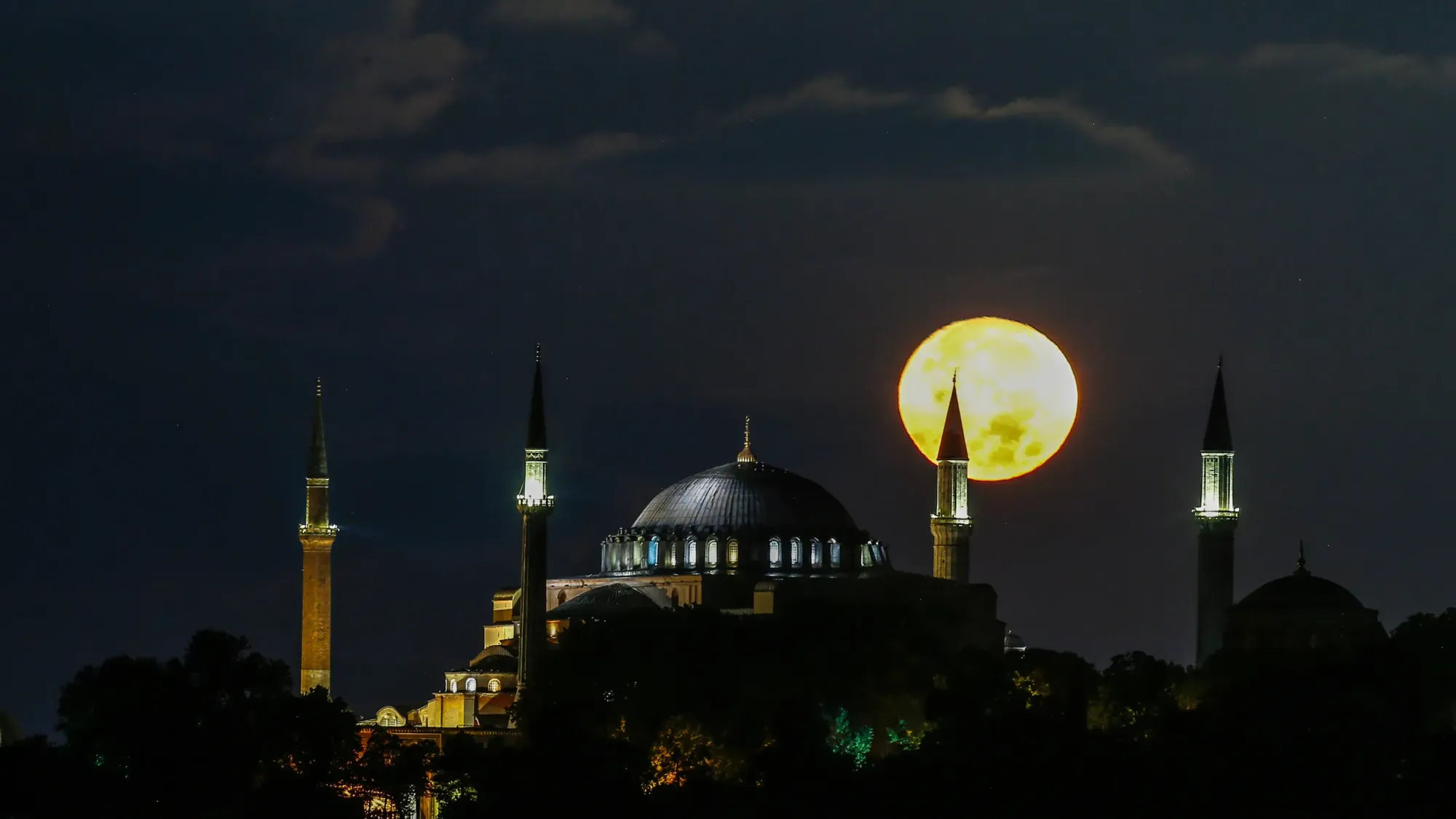
Theodora and the Architecture of the Divine

Once upon a time, you could snare a man using binding spells and astrology. You inflamed his heart, his soul, his liver and his spirit. You invoked an angel to seize him and bind him and you made him your slave. You wrote out the spell, you spoke it aloud and sealed it with a kiss. When Venus was in the House of Aries, you stripped before him and became his harlot. Or perhaps you waited for the conjunction of Mars, Mercury and the Moon in Pisces, the Christian sign.

Things are so different these days.
When she was a child, when dreams visited her, those night visitors fluid and mysterious, they slipped through the opening and closing of the sea gates. She dreamt she was in a chain of dreamers and so she wondered, as she walked the city walls, whether she too was being dreamed.
We are borne away on the ebb tide by a male God, by Christ who is our Savior and our guide into the afterlife. But the first principle is that the Virgin Mary comes before the Son. We enter this life with a woman, with Mary, the Stella Maris, rolling in from stormy seas on our half-shells, our half-moons, and it is Mary who carries us to Jesus at the end. Women are the Alpha and the Omega… Amen.
Sailing to Byzantium
If the Virgin Mary had not existed, it would have been necessary to invent her...
With the sky darkening under smoke, a galley slid out to sea and the young woman on the deck looked back at the land, fading beyond the wake. In the old city the cleansing of the churches and monasteries was underway by Paul ‘the Jew.’ Forget the past. It is always behind you. Constantinople lay ahead and a rendezvous with the Demon King, the proud and moody figure who now disturbed her dreams at night, those nights when she was with a man or when she awakened to rock the baby to sleep. A squall washed over the boat and Theodora embraced it as the rain came down. She was going home. She was 25 years old, still beautiful, a woman with a colorful past…
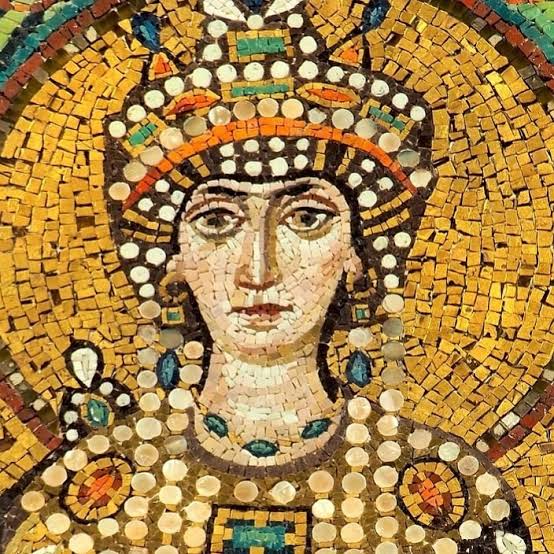
The reputation was all true of course. When she was 15 she had made her name in Constantinople with her rendition of Leda and the Swan, stripping off her clothes and lying down before her audience. A sacrifice and an invitation. Dozens of men followed.
In Alexandria and Antioch she saw that there was more to life than pornea and akatharsia. Become a spy for the Emperor, said a friend. Believe in Christ as her lord and savior, said another. Study the Hermetica and Hermes Trismegistus warned a third. Theodora didn’t think so. Why should these male figures relieve her new craving any better than the old ones? Her craving drew her to the Anti-Christ in her dreams for, when you got right down to it, weren't dreams more revealing than politics or religion?
Theodora was still a pagan. She believed in the stars and the moon above Byzantium. She believed that whatever happened in the Heavens was reflected down here on earth. She believed in Dame Fortune and in the gods of the Hippodrome. Life was governed by the four chariot-racing factions: the Reds, Whites, Blues and Greens. Life had always been about color and the pageantry of the senses and the Hippodrome was its grand cathedral, where Fate ruled and emperors stumbled.
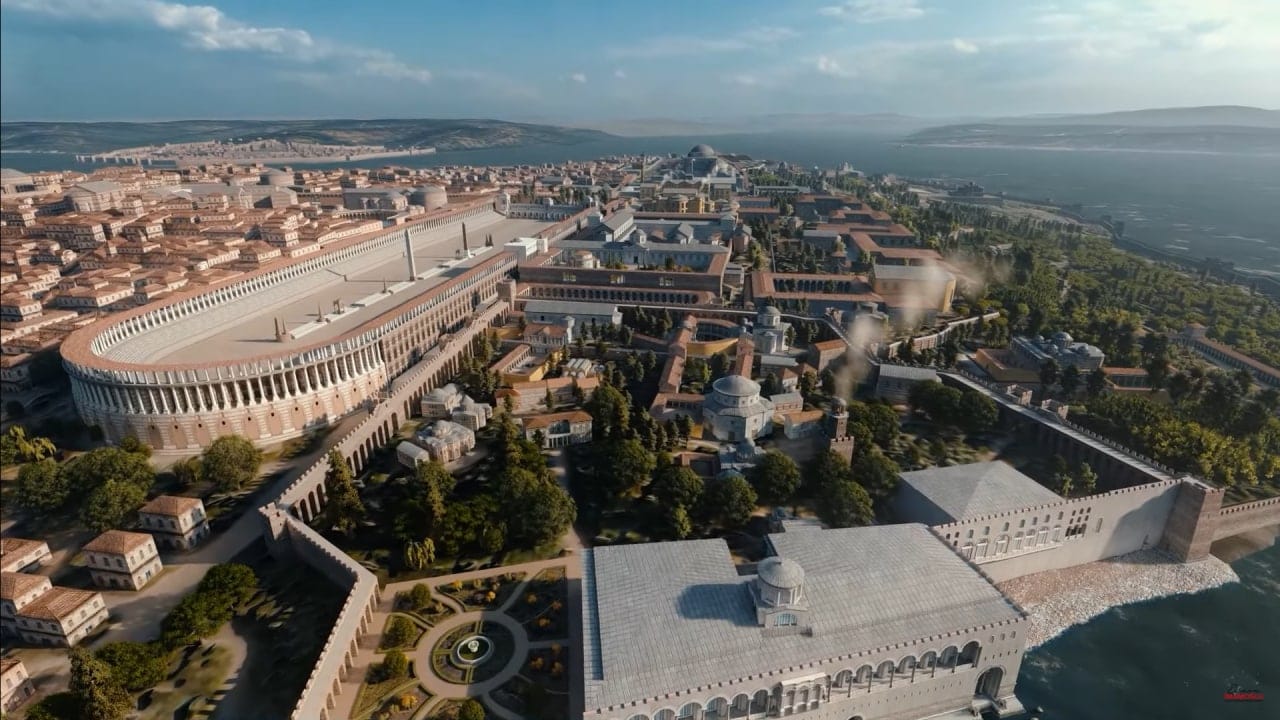
Still, nowadays the 12 Zodiac signs were being pushed aside by the 12 Apostles - Christianity couldn't be ignored. In the Hippodrome the Orthodox now supported the Blues and the Monophysites supported the Greens and it was difficult to avoid taking sides (Theodora had ties with the Blues).
But what place was there for women in all this? The patriarchs said that women could not worship at the altar. God forbid they should be menstruating. Eve’s sin must be atoned for by women, they said, and their sacrifice must be the wrenching pain of childbirth. Men were not called upon to sacrifice equally, and if Jesus experienced such pain when he was sacrificed upon the Cross, wasn’t that just another excuse for letting men off the hook? She had sacrificed her own son by leaving him in Alexandria in the care of Patriarch Timothy. That the Virgin Mary had sacrificed her Son in the same way was not enough. This masculine theology left no place for women except martyrdom.
Theodora was fascinated by the central question of the age: was Jesus human or divine? In the West he was human; in the East he was Divine. Heresies both. But in Constantinople he was both. Perhaps everyone, including Jesus, had both divine and human natures – didn’t every one of God’s creatures? Surely that allowed a place for women, for weren't women human and divine too and, if that were so, then surely God was both male and female...
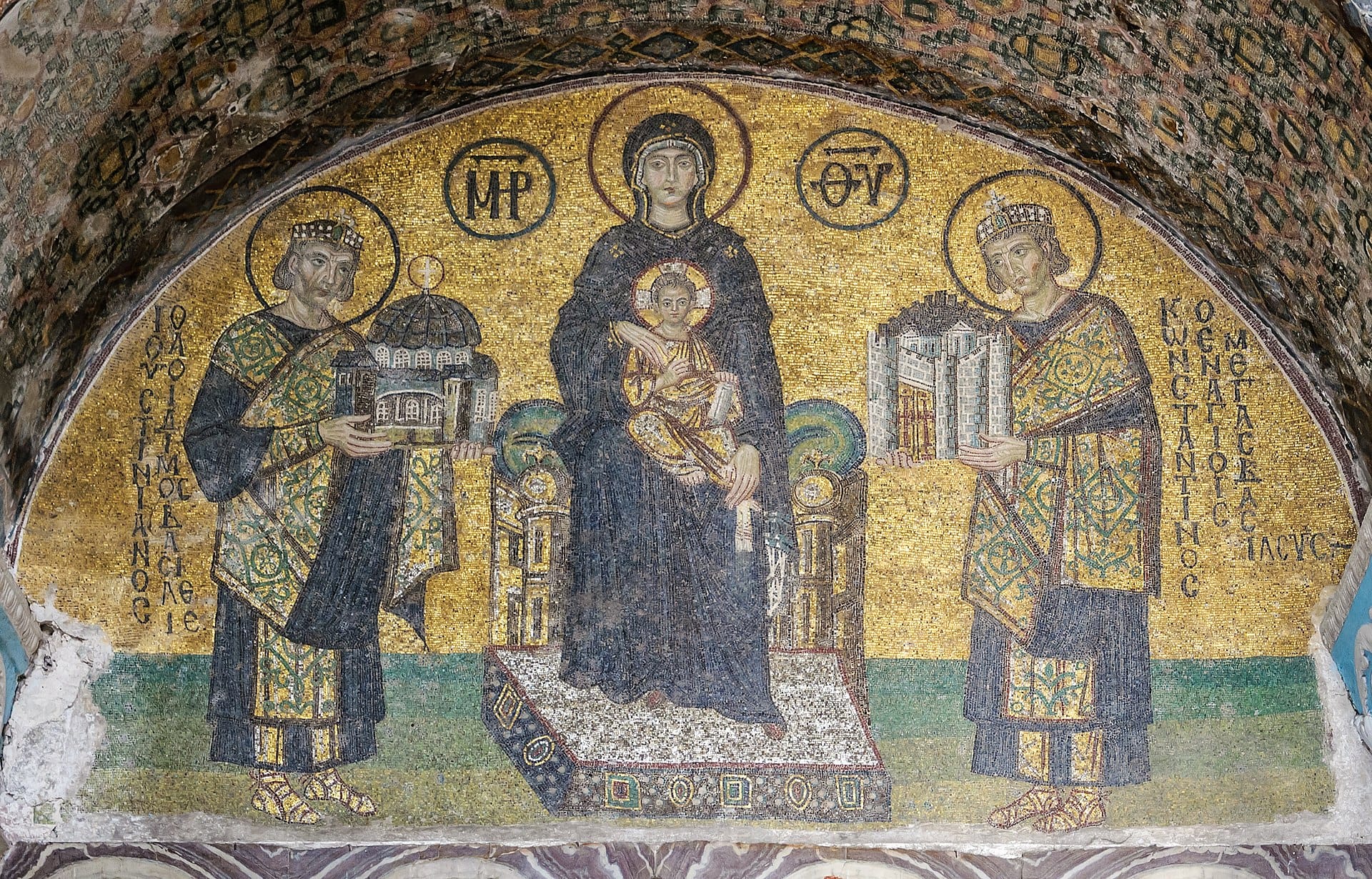
The Divine Elevator
For centuries the churches of Sophia and the Virgin Mary stood on opposite sides of the Old City of Constantinople...
The Virgin Mary's church was a basilica along the Golden Horn just outside the old city's western walls: St. Mary of Blachernae. Inside St. Mary of Blachernae were its sacred springs, where emperors bathed and washed away the sins of Eve. Water...
Across Istanbul on its ocean side stands the Hagia Sophia (or Aya Sofya), which Justinian and Theodora built between 532 and 537. Light poured in from the high windows and reflected off the walls and colored marble. From ancient times, the sun's rays expressed the wisdom of God and one contemporary observer likened the Hagia Sophia to being inside a spiritual lighthouse (a pharos). Another said the golden dome was suspended from Heaven by a golden chain. The effect was deeply spiritual, he said, a sense of floating weightlessly between Heaven and Earth, embodying both, and situated between this world and the next. The church contained the entire universe, in all its beauty and its symmetry, West and East, and Christ and the saints were present among them, for really this was Heaven on Earth. Bathed in its radiance, the candles, the singing, the incense, the icons, worshippers experienced the holy Sophia descending from the Vault of Heaven like a white dove (Christ was conceived via a white dove) and so they too could dream of ascending to Heaven with her. Light...
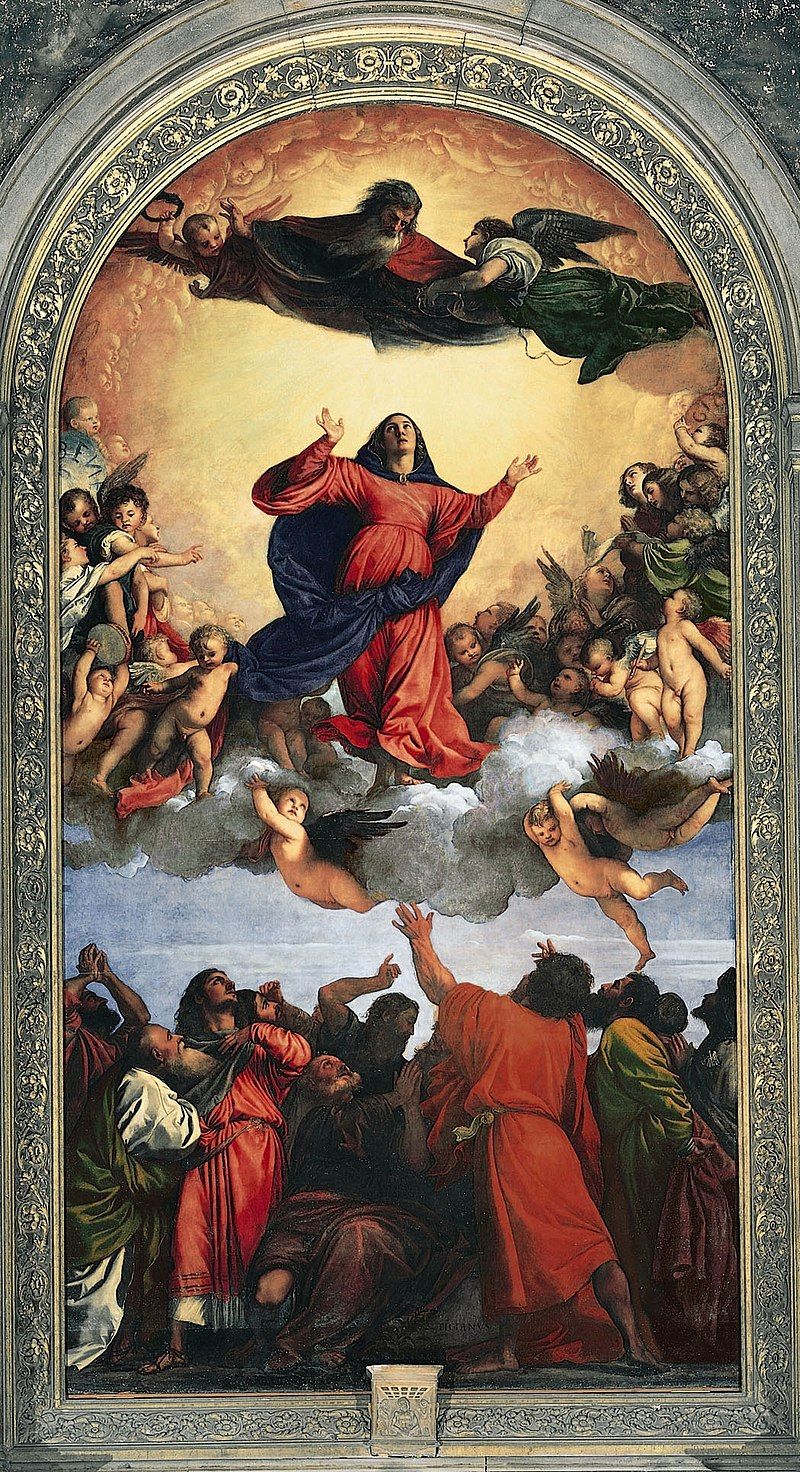
For all you may read that Sophia is not a woman's name and that it means "wisdom," it has always carried strong feminine associations in Greek and Gnostic thought. Indeed divine wisdom was associated with women well before the ancient Greek oracles and Old Testament Judaism (the Shekhinah). But the Church began to absorb Sophia into Jesus, pushing away the ancient feminine goddess wisdom she represented.
Mary or Sophia? Baptism or Resurrection? Birth or death? Water or light? The Moon or the Sun?


In Justinian's eyes, Sophia was more interesting than the Virgin Mary. To him the Sophia was Christ and Christ was an aspect of God's divine light. Justinian was often to be seen in the Hagia Sophia at night, hoping to see angels. He never slept those years. He would leave his body behind in bed to keep his wife company, while his head prowled the Hagia Sophia. They never had any children but then Theodora was known to support abortion.
Dreaming the Virgin Mary
How is it that with the rapid ascendancy of the Virgin Mary during the early Christian centuries that she came to dominate Jesus physically in mosaics and icons? How did Mary become the all-powerful Mother, while Jesus shrank to a small child in her arms?
In one sense the answer is obvious: Jesus himself could not be shown upon the cross. In another sense, apocryphal literature, the devotions of ordinary people and powerful Byzantine empresses all played a role here.
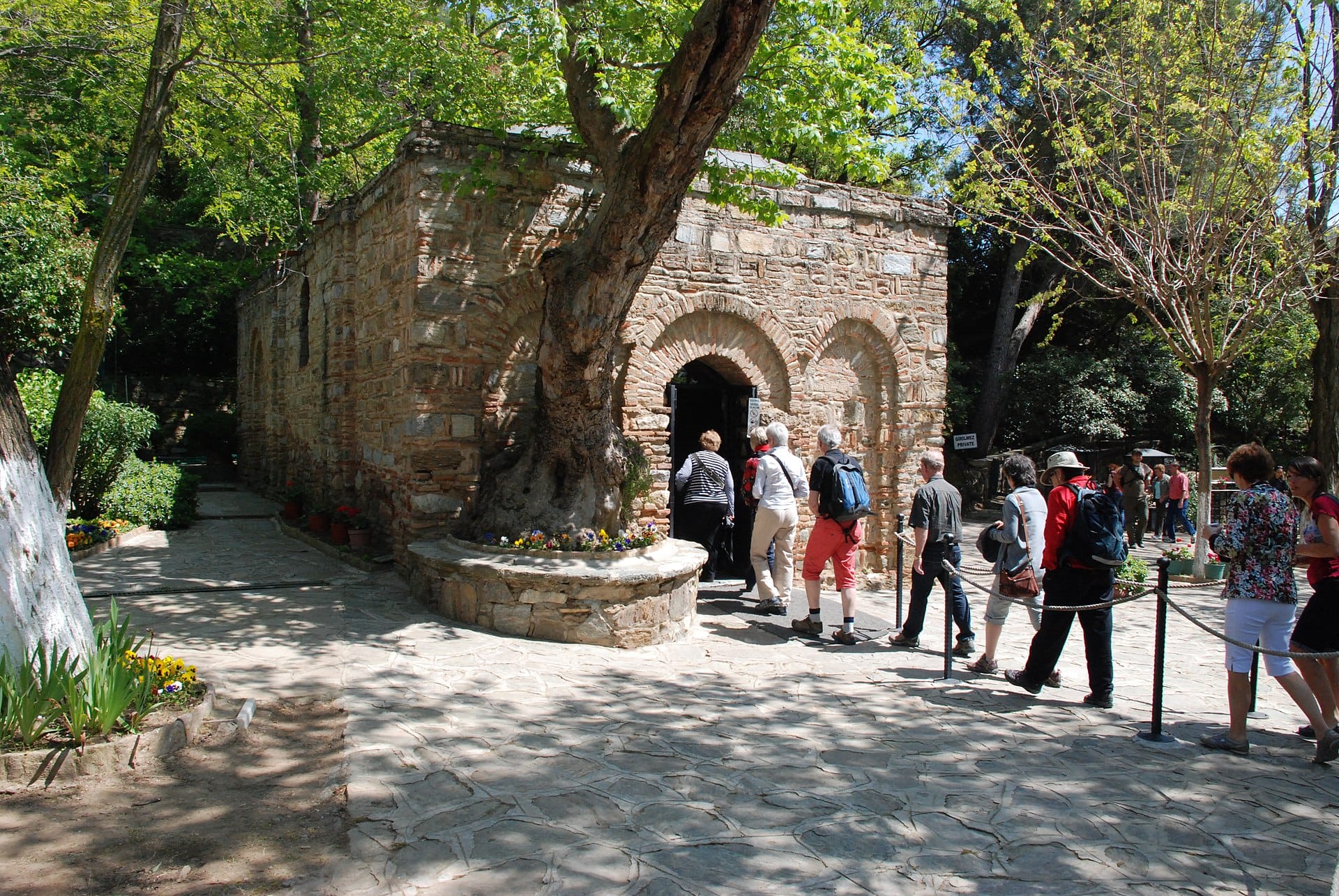
Many centuries earlier, there had been a miracle! Mary's house was found at Ephesus. Byzantine women of all classes rushed to embrace her, as they embraced Artemis before her. Some of the men, St. Ambrose, for example, seized on her virginity and humility to elevate male monasticism and celibacy over the heads of the women, who after all could not be expected to remain humble virgins (Eve and all that...). This had the desired effect of pushing women back into their proper place: marriage and motherhood. The patriarchs increasingly separated the Virgin Mary from real women, putting her out of reach with the miraculous notion of "perpetual virginity." It was a dangerous idea though: by the Council of Ephesus in 431, at the instigation of the Empress Pulcheria, who claimed to be a virgin herself, the Virgin Mary became no less than the Mother of God, the Theotokos. Could Theodora build on this and reclaim motherhood, not just virginity, by making it divine too? Joseph, her husband, must disappear of course and Jesus must become a small child.

Sophia and the ancient goddess wisdom associated with her had been being pushed aside already, her roles usurped by Christ, the Son of God, the Logos, the Word. If once she had been those emanations of light that created the universe and the life beating in every human being, now Sophia was no more than a Holy Ghost found in the writings of the Gnostics.
The Virgin Mary, on the other hand, was a star rising above the waves like Aphrodite before her. Queen of the Seas, Queen of the Heavens, Queen of the Virgins: the Cult of the Virgin Mary.
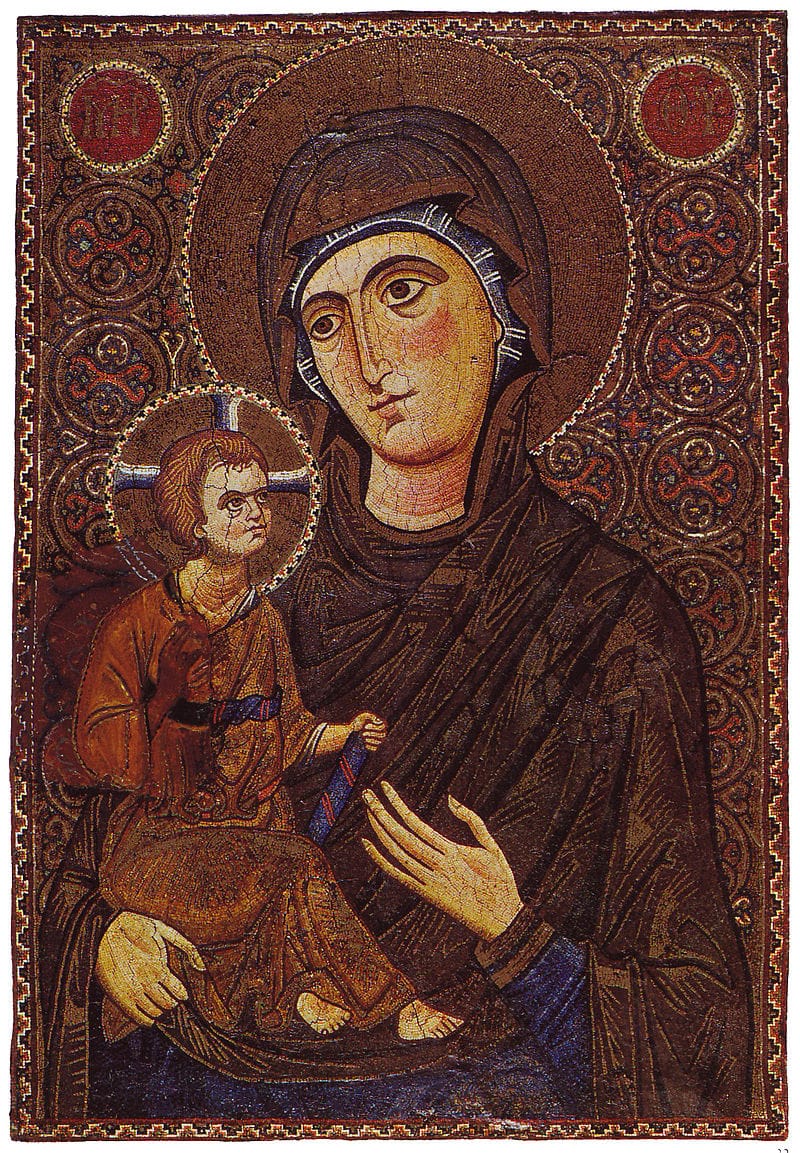
Theodora had seen images of Isis nursing Horus in Egypt. There was a similar icon of Mary and Jesus in Constantinople that had been painted by Saint Luke (and donated by Pulcheria). Such images, Theodora decided, were the most powerful that ever existed and so she lobbied for their display in churches and the fortified monasteries around the scattered empire. You can still see some of those icons today, for example at St. Catherine's monastery in Sinai. The Virgin Mary also must dominate religious icons in private homes and her power must be grounded in scripture:
Revelation 12:1, "A great sign appeared in the heavens; a woman clothed in the sun, and the moon beneath her feet; and on her head a crown of 12 stars" - the Virgin of the Apocalypse.
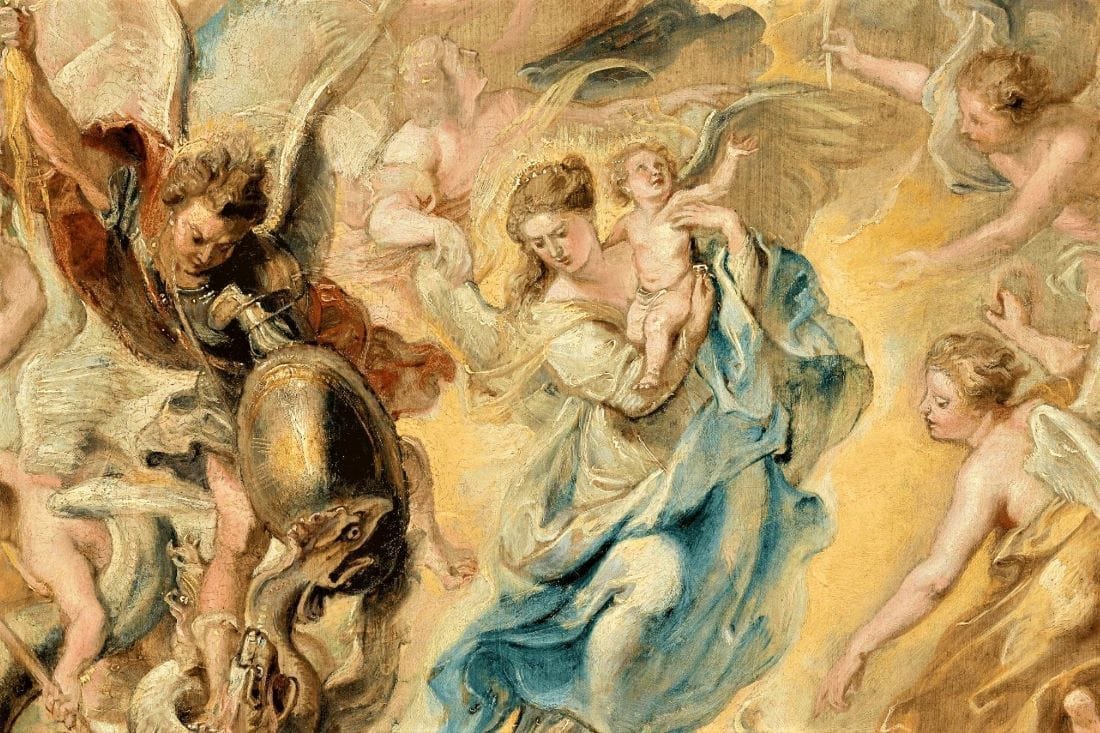
Revelation 12, the 12 stars, the 12 tribes of Israel... It happened over many centuries, even before Theodora accelerated it. The Virgin Mary became a transcendent figure, leaving behind her baptismal role and becoming associated not just with the earth and the seas, the fertility of the crops and rain from the sky, the roses and lilies, with beginnings. She came to be associated too with endings, with salvation. Now she offered something for everyone. If the Annunciation was the story of how the Virgin conceived Christ with light that did not rupture her body, then the Assumption was the story of her going into the light at the end of days. For many she would become the Gate to Heaven itself, even the Co-Redeemer. Other goddesses would no longer matter. From birth and baptism, she had become death and resurrection. Moon and Sun. Water and Light...
The Architecture of the Divine
Religious architecture is meant to illustrate the divine. The divine itself is invisible and so the invisible is at least as important as the visible. Solomon's temple inspired the Jews, the Pantheon inspired the Romans, the Hagia Sophia inspired the Byzantine Orthodox (and the Dome of the Rock and St. Mark's in Venice) and St. Peter's in Rome inspired Roman Catholics. There is majesty in the invisible. God the Architect.
Abbot Suger of St. Denis claimed that his cathedral (consecrated in 1144) was "some strange region of the universe which neither exists entirely in the slime of the earth nor entirely in the purity of Heaven." He was echoing the Byzantines, for in the great Gothic cathedrals of Western Europe, colors reflected spiritual states and the colors in the stained glass were designed to show the light of God, in the reds and the blues, the greens and the whites. They were the windows of Heaven.
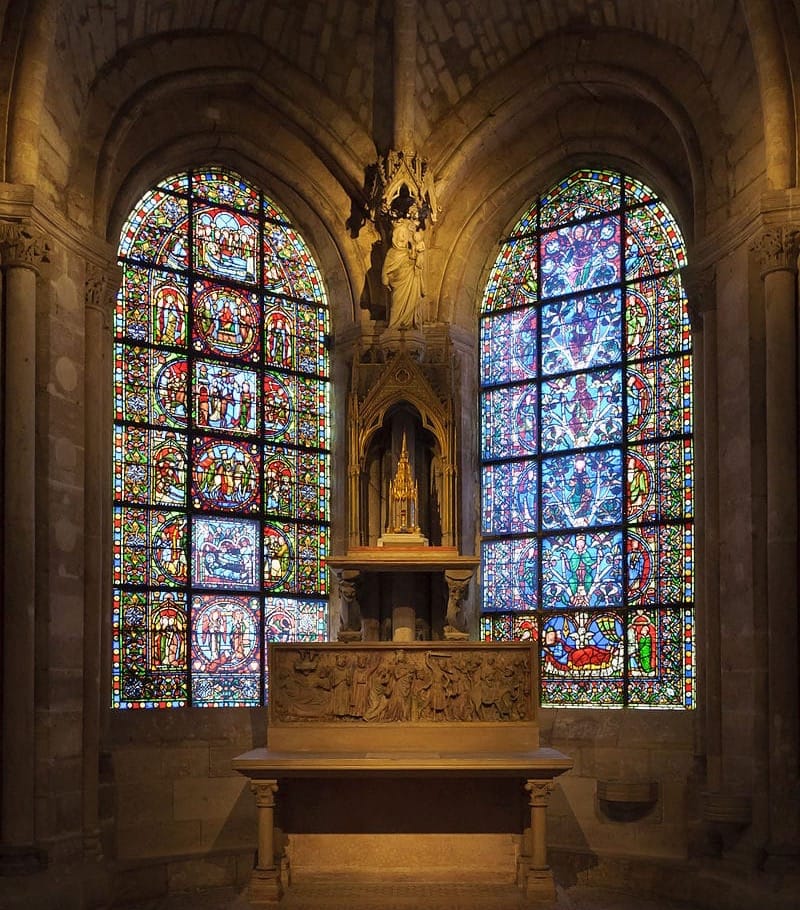
When you are inside a great Gothic cathedral looking up at the pointed rib vault, Mary's ribs, then it is not only to feel the ascent of the soul to God, but to feel the power of the Virgin Mary to humble you, to press you down upon the stone floor. The light never shines so brightly at floor level in Chartres or Reims or St. Denis. This architecture is designed to overwhelm you and drown you at the bottom of the pool. There is no water in here, but Chartres was built on the site of a sacred spring to a pagan goddess (as was Lourdes). The Virgin Mary is everywhere: the madonna ascending behind the altar, the Dark Madonnas in and above the crypt, the Sancta Camisia cloth, the labyrinth and the rose-patterned stained glass windows. By 1200, Mary had become more powerful than Jesus, a stern vision of stone, water and light, guarded by fierce gargoyles, but real religious women were becoming more marginalized here than ever.
There was an alternative to all this...
The Emerald Tablet
In Alexandria, Theodora may have been acquainted with the mysterious text known as The Emerald Tablet. Even as Justinian persecuted pagans, closed the School of Athens and rededicated Isis' Temple at Philae to Mary, the Hermetic texts and astrology persisted among the people and the elites just as they do today.
The Emerald Tablet had a significant impact on the Islamic world and medieval Europe. It may be brief (read it here), but it gives us the pagan version of creation, how all things below reflect those in the Heavens and vice versa. The macrocosm and the microcosm. Such ideas were compatible with Christian beliefs: the idea that the heavens were a circle overhead in which planets and stars revolved just meant they were placed there by God. In many Gothic churches, Zodiac signs appear in the windows or on the floor, including Chartres, Vézelay and Canterbury. But in another sense they were not compatible: in Christian theology, this world was inferior to Heaven's and you had to be "saved" to go there and most people got there only via the Virgin Mary and Jesus.
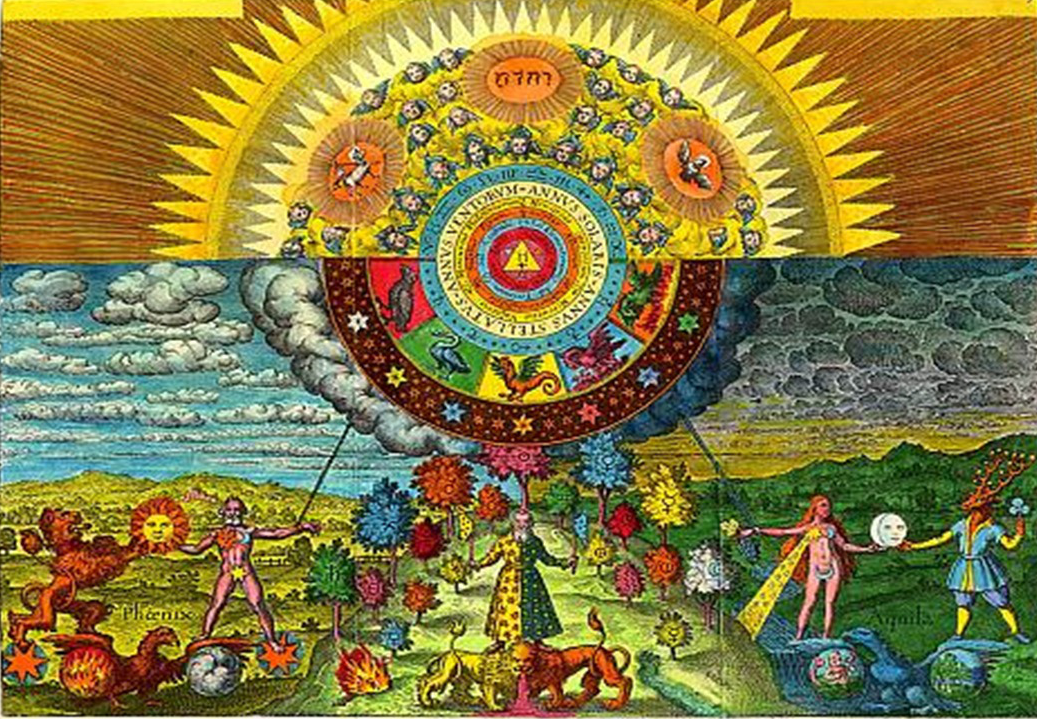
In keeping with the idea that this world was inferior, many Christians believed that this world was just a dream, an illusion, and God was to be seen only in occasional mysterious figures of light visiting the earth... Angels. Many pagans agreed with this but they were more interested in the way the sun and the moon held sway over human bodies filled with fluids, in the tides of the sea rising and falling and the waxing and waning of the moon, the flooding of the Nile, and so too the womb, the breast, the penis, menstruation and ejaculation... Physics. The old Hermetic texts told of Isis' tears, of blood and roses, of Hathor, the cow-goddess of the Milky Way. These were the colors of the life force, the food of the womb. White + Red transmuted into symbol.
Early Christians had to adapt to this, of course, hence the Eucharist (White + Red). But by medieval times there was a twist: instead of Jesus' body it was the white milk from Mary's virgin breasts and the red blood of the crucified Christ. It was said that Saint Dominic found grace in a cave near Toulouse when he drank Mary's breast milk as he was given the rosary. St. Bernard of Clairvaux said he was sprayed with her breast milk. Maria lactans... Christ's blood was detected in bloodstones, the red speckling the green. More amazing miracles!
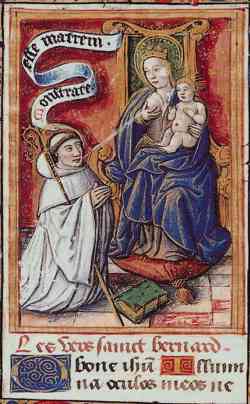
If White was the color of grace, Red was the color of love, of passion, of Mary the red rose, of art and magic. Fire...

Fire was the key for the alchemists too as they labored over their furnaces and flasks. The Philosopher's Stone was red like a ruby. But what then were the key ingredients to produce it? Some worked with metals, changing them from black to white to gold to red, or so they said, while others saw that human life was produced in a woman's womb after all, just like Jesus was, so what about milk and blood? Semen and menstrual blood were white and red. Could they play a role? Perhaps the fiery phoenix mattered less than the white dove - the symbol of Venus - was it semen? Some alchemists donated their own semen and the married ones enlisted their wives for the menstrual blood. But surely Mary couldn't breast feed unless she menstruated? And did semen inherently contain Original Sin? Problems, problems... Those alchemists worked their way into a dead end. Perhaps green was better than red?
The Emerald Tablet wasn't about extracting gold from lead really. It was about extracting the life force, the spirit, the divine spark, from the physical body. Pure essence... The metaphor was a precious jewel, an emerald, for green was the color of life. Earth...

Water + Earth + Fire + Air/Light
Blue + Green + Red + White/Gold
The four signs.
Five if you split Air/Light into two, as the Neo-Platonists and alchemists did, hence the Ether, the Quintessence, the Fifth Element, different from Air. Could it be called "Light"? Alchemist and scientist Robert Fludd (early 17th C) didn't think so; he said that ether was "subtler than light." Echoes here of the Sophia... Some associated it with magic, with Hermes, with Art, the creative instinct...

There was really a sixth element too. Gothic cathedrals were all about freezing Time... Christian theologians understood this, which is why the great Gothic cathedrals are really visions of order placed on what seems like the chaos of daily life.
There was one group who rejected all this while they shared the passion for mysticism and a relationship with God.
The Cathars
This world is a dream. Satan made our evil, fallen world and he is abroad in the land. He claims he is God and where is the real God anyway? In a parallel world of Light, through the looking glass. There is no resurrection of the body for us to look forward to. If our souls fail to escape the dark snares of the material world, we will be reincarnated back into it. Jesus and Mary cannot save us. They are not human anyway - they are angels, mere illusions of God, sent to warn us of Satan's dominion among us.

Good and evil are locked eternally in a cosmic circle and we are all celestial spirits traveling through space and time. If we hope for salvation we must refuse meat, refuse sex, refuse to build churches, refuse Baptism by water and accept the invisible world of the Light.

But hardly anyone did... The population of the Cathar areas in Languedoc skyrocketed and the Pope was not amused.
The horrific massacres of the Cathars at Béziers (1209) through Montségur (1243-44) and the Terror of the Inquisition occurred in conjunction with the triumph of the Virgin Mary at Chartres Cathedral (built 1194-1223), and the time when the Holy Grail legend flourished (1180-1240), the time of chivalry and the troubadours, the Knights Templar and the Crusades. This was an astonishing astrological and cultural collision: the diverging strains of Catholicism tearing each other apart between the twin conjunctions of Uranus and Neptune.


The Cathars, or Albigensians, like the Bogomils in the East, refused the transcendent Virgin Mary of the Church of Rome ("the mother of fornication"). They refused her advocates Saint Bernard and Saint Dominic: after all, hadn't the Virgin Mary tried to snare Jesus in material form in her womb? They even saw Catholic priests taking concubines in their villages. But today most people who are interested in the Cathars focus on the Cathar monks (the "perfecti") as if they were Grail heroes. As with the growth of Christian monasticism a millenium before, those austere Cathar elites who were opposed to sexuality were largely male and just as patriarchal in their beliefs as the Catholic Church they professed to despise. No matter that women technically were allowed to become "perfecta," and many did, the most famous being Esclarmonde de Foix; they remained secondary to the men.
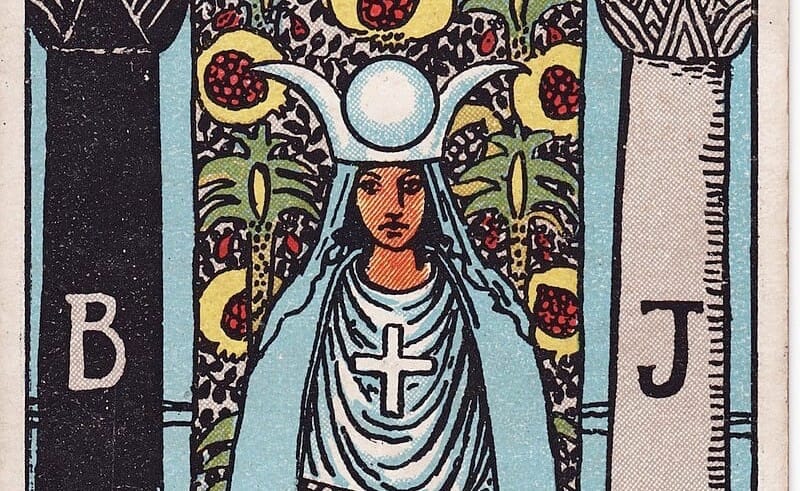
If there is any silver lining here, for the ordinary people of the Cathar lands, and especially for the women, the Virgin Mary was in fact worshipped and she was (and is) the Dark Madonnas of southern France and northern Spain and she summoned up all the ancient pagan fertility beliefs of the earth they lived upon. This Virgin Mary was the people's goddess and the irony of the Cathar massacres is that this Dark Mary survived.
Diva
Isn't this the paradox of any good idea? The Virgin Mary became an institution of power and control, a diva. By the 16th century her cult was out of control, although this may have helped her pull off the destruction of the Turkish navy at Lepanto in 1571.
Once upon a time, religions used to create enchanted worlds. Catholicism may not have satisfied the Cathars, but it has its relics and holy water, stained glass windows and rosary beads... The centuries have passed and for the secular these icons have become clichés. But science has no heroes or heroines. It's impersonal. Ghosts in the machine. Art has partly picked up the slack, but how many films can you name that celebrate the Goddess or the Virgin Mary these days?
Jean-Jacques Beineix's Diva (1981) is one of those films. It is shaped to resemble a dream where everything is enchanted: it is shot in blue, because that is the color of dreams and Beineix has reflections pop up in glass counters or in dark sunglasses or Citroen headlamps. Color symbolism is as crucial as in Catholicism and the sun and moon. Diva is dreaming the Virgin Mary...
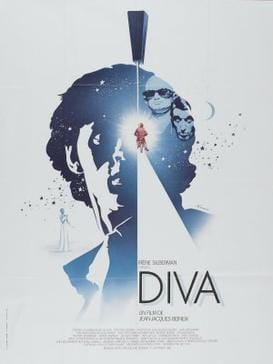
Jules is a young Parisian messenger boy with wings on his crash helmet instead of his feet. He is Hermes the likable thief, and he "steals" the voice of a beautiful black opera singer, by making a pirate recording of her in concert. He knows she would never permit this, because she regards any form of recording as a form of "rape."

The thief has played a colorful role in mythology from Prometheus on. This kind of Art - essentially piracy - annihilates. It leads to chaos. On the other hand, without Hermes the thief there would be no spread of technological advances or artistic expression. It is a conflict that can be resolved only through the magical powers of Art – alchemy really - represented in Diva by the magician Gorodish, and his friend Alba. He brings order to chaos, with his beautiful white Citroens, his jigsaw and wave machine, and the enchanted castle at the lighthouse. She is a 14-year-old Vietnamese Ariel who roller skates in glossy mini-skirt and steals jazz records. Ironically, the real heavies claim to believe in order: "Order is all that counts," but it is an authoritarian interpretation more in line with their other comments: "I hate Beethoven… I hate elevators… I hate cars," which are a running joke. More here.
The diva remains an inspiring figure even as she is clearly a lonely one. This is the fate of the Virgin Mary of today, Mater Dolorosa, undermined by Vatican II, pushed aside by feminism and The Da Vinci Code's upstart Mary Magdalene, and ignored by the many. Mary is joining the fallen world of the Cathars.

As it was in the beginning, is now, and ever shall be, world without end. Amen.
